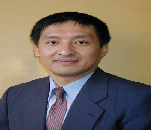Day 2 :
Keynote Forum
Jerzy A Szpunar
Tier I Canada Research Chair & Professor at University of Saskatchewan, Canada
Keynote: Microstructural design in hydrogen fuel generation and storage
Time : 09:00-09:30

Biography:
Jerzy A. Szpunar received his PhD and DSc. degrees from Academy of Mining and Metallurgy in Cracow. He joined the Department of Mechanical Engineering at the University of Saskatchewan in August 2009, as Tier I Canada Research Chair. He came from McGill University where he was of Materials Science and Birks Chair in Metallurgy. His research interests extend to various areas of materials related investigations. In particular he has longstanding interests in deformation and recrystallization processes in metals; in structure and properties of thin films; in electronic interconnects; in high temperature oxidation and corrosion; in synergy of wear, erosion and corrosion; in the applications of X-ray and neutron diffraction techniques to structure of grain boundaries and other interfaces; in hydrogen ingress into nuclear materials; in hydrogen generation and storage: in intergranular fractures; in fatigue and failure; properties of nanocrystalline materials and properties of nuclear materials and nuclear fuel. He was a leader of 49 major research projects – mostly materials related investigations. The results of his research are presented in more than 950 research papers including about 600 journal publications.
Abstract:
Hydrogen has been recognized as a clean and sustainable fuel. However, still many problems have to be to be solved in the area of generation, transport, and storage of this fuel for the future hydrogen-based economy to be realized. The reaction of water with activated aluminum powder is considered as one of the methods to generate hydrogen. The reaction produces also aluminum hydroxide (Al(OH) 3 or AlOOH) as the byproduct; these compounds change to alumina (Al2O3) after calcination process, and alumina can produce aluminum. Hydrogen production rate can be increased if an effective surface area of aluminum exposed to oxidation is increased. Ball milling process is considered as a method that remarkably changes the microstructure of morphology of aluminum hydroxides and can produce submicron or nano-sized particles. We found that microstructural refinement can be used to promote the reaction and allow increasing the production of hydrogen. The addition of water-soluble salts (potash or salt) also allows increasing the oxidation rate and hydrogen generation. However, we discovered that the presence of salt had much smaller influence than microstructural modifications. The traditional shrinking core model was modified to explain the kinetics of the reaction between aluminum particles and the fluid. The storage of hydrogen will also require structural modification of the storage system. One a storage system that was developed by us will be discussed. We designed a Pd-graphene composite for hydrogen storage with spherical shaped nanoparticles of 45 nm size homogeneously distributed over a graphene substrate. This new hydrogen storage system has attractive features like high gravimetric density, ambient conditions of hydrogen charge and low temperature of the hydrogen discharge. The palladium particles produce a low activation energy barrier to dissociate hydrogen molecules These Pd particles, have to be nano-size and homogeneously dispersed on the graphene surface, to serve as efficient hydrogen receptors and further facilitate a dissociation and diffusion of hydrogen and storage in graphene via a spillover process. The hydrogen storage capacity in such a combined metal-graphene system could be significantly increased compared to storage in graphene or in metal. In this project, we optimized the structure of Pd/graphene to allows a hydrogen uptake at ambient conditions and discharging of hydrogen at low temperature. Detailed analysis of the mechanism of hydrogen storage using ab-into calculation for graphene metal system is presented.
Keynote Forum
Sanjeev Mukerjee
Head of Renewable Energy Technology Center & Distinguished Professor at Northeastern University, USA
Keynote: Enabling cost effective hydrogen at low temperatures
Time : 09:30-10:00

Biography:
Sanjeev Mukerjee is a college distinguished professor in the department of chemistry and chemical biology and heads the Renewable Energy Technology Center at Northeastern University. He has authored 160 papers in peer reviewed journals and has an H-factor of 65. He holds 9 patents and has enabled several start up companies with membership on their scientific advisory committee.
Abstract:
This presentation will focus on durable, high-performance materials and interfaces for advanced water splitting, enabling a clear pathway for achieving <$2/KgH2 (on scale) with efficiency of 43 KWh/Kg using anion exchange membrane interface. Advances via fundamental understanding of both hydrogen and oxygen evolution reactions (HER/OER) leading to novel materials will be in conjunction with critical improvements in membrane and ionomers and gas evolution electrodes with corresponding characterization and testing. Progress towards these goals under a three-year multifaceted and comprehensive effort will be described wherein Northeastern University (NEU) will present catalyst development and characterization (both in situ and ex situ). University of Delaware (UD) will showcase improvements in ionomer and membrane materials. In addition, close collaboration with National Laboratory partners with Lawrence Berkeley National Lab (LBNL) participating in multiscale modeling and computation in close concert with Sandia National Laboratory (SNL) providing MD simulations of the membrane catalyst interface and National Renewable Energy Laboratory (NREL) providing advanced ionomers, durability protocols and validation will be described.
Anion exchange membrane electrolyzers (AEMELs) are ideally suited with a low-cost profile enabled by platinum group metal (PGM)-free catalysts, low fluorine content membranes, and a less corrosive environment for cell separators. This presentation will showcase state of the art stable, high-conductivity, and high-strength AEMs, stable and active PGM-free catalysts for hydrogen and oxygen evolution reaction (HER/OER), and high performance electrode architectures that together can unlock the cost advantages of AEMELs. If successful, the developed technology can meet FCTO efficiency targets, delivering carbon-neutral hydrogen at $2/kg while simultaneously enabling higher penetrations of wind and PV electricity on the grid.
The overall goal is cell level performance of 1.62 V at 1 A/cm2, which meets the FCTO efficiency target of 43 kWh/kg. Component performance targets have been established using a porous electrode model to support the overall cell performance target. This is at the modeled scale of 50,000 kg/day and operating at 1 A/cm2 resulting in hydrogen cost at $2.15, $1.82, or $1.76/kg, respectively (2, 20, 200 plants). In the low-volume manufacturing case, it is still possible to meet the cost target by operating near 2 A/cm2, sacrificing some efficiency.
Keynote Forum
Eric L. Miller
Program Manager at the Fuel Cell Technologies Office - U.S. Department of Energy, USA
Keynote: U.S. Department of energy hydrogen and fuel cell technology perspectives
Time : 10:00-10:30

Biography:
Dr. Eric L. Miller serves as Hydrogen Production and Delivery Program Manager at the Fuel Cell Technologies Office of the U.S. Department of Energy’s Office of Energy Efficiency and Renewable Energy. His professional career in alternative energy research has spanned more than 25 years, centering on solar energy conversion and on hydrogen and fuel cell technologies. He is widely recognized as a world leader in photoelectrochemical hydrogen production for his pioneering research in this field. Recently, Dr. Miller has played an instrumental role in the launch and management of DOE’s Energy Materials Network, which aims to accelerate materials discovery and development critical to a broad spectrum of key clean energy technologies.
Abstract:
Today the technology around generating efficient and sustainable energy is rapidly evolving and hydrogen and fuel cells are versatile examples within a portfolio of options. The U.S. Department of Energy (DOE) Office of Energy Efficiency and Renewable Energy’s Fuel Cell Technologies Office (FCTO) addresses key technical barriers faced by hydrogen and fuel cell technologies through a comprehensive portfolio of early-stage research and development (R&D) with the potential to meet DOE technical, economic and energy security targets that ensure competitiveness with incumbent technologies in the market and alignment with national priorities. This presentation will provide an overview of DOE FCTO early-stage R&D activities in hydrogen and fuel cells, highlight technology status versus targets and identify recent achievements and market trends. The presentation will also offer insight into future prospects of hydrogen and fuel cells to enable energy security and resiliency across the transportation and energy generation sectors. Examples include the value proposition of hydrogen and fuel cell technologies as well as the potential of DOE’s H2@Scale concept to utilize hydrogen as a large-scale energy carrier to enable benefits across multiple sectors. Supporting foundational materials research in hydrogen and fuel cell technologies being conducted through FCTO’s Energy Materials Network Consortia will also be described.
- Young Research Forum - Sessions: Energy Storage & Conservation | Advances in Materials Science and Engineering | Wind Energy | Fuel Cell Materials, Methods & Manufacture | Renewable Energy | Advanced Materials for Energy | Bioenergy & Biotechnology
Location: Charles Ballroom A

Chair
Jerzy A Szpunar
Tier I Canada Research Chair & Professor at University of Saskatchewan, Canada
Session Introduction
Helena Weingrill
PhD Student at Montanuniversitaet Leoben - Austria
Title: Selection and stability investigations of polymers for latent heat storages
Time : 11:00-11:20

Biography:
Helena Weingrill is a PhD student at the Chair of Materials Science and Testing of Polymers at Montanuniversitaet Leoben in Austria. She finished the bachelor’s and master’s programme of Polymer Science and Engineering also at the Montanuniveritaet Leoben.
Abstract:
Semi-crystalline polymers offer many advantageous properties which are required for phase change materials (PCM) in latent heat storages. They exhibit high heats of fusion and a wide range of melting temperatures. Additionally, specific characteristics (e.g. thermal conductivity) can be easily tailored via compounding. However, only high-density polyethylene (HDPE) has been considered as suitable PCM so far. A Differential Scanning Calorimeter (DSC) was first used to identify candidate polymer classes according to their storage capacity and application temperature. The most promising polymer types were found to be: polyethylene (PE), polypropylene (PP), polyamides (PA), polyoxymethylene (POM) and polyethylene glycol (PEG). An HDPE, a PA 6, a PA 4.6 and a POM copolymer were further selected for application-oriented stability investigations. Cyclic and static thermal loads were applied to examine their thermal and thermo-oxidative stability. Thermal cycling was done in a DSC up to 3000 cycles in air and nitrogen atmosphere and thermo-physical characteristics were recorded simultaneously. Whereas the PA 4.6 degraded steadily, the thermo-physical characteristics of HDPE and the PA 6 were not affected. The stability of POM could be improved by utilizing a closed system. Static thermal outsourcing was done above melting temperature in circulating air ovens. Fourier Transform Infrared Spectroscopy (FTIR) revealed that degradation occurred mainly on the surface leaving the storage-relevant characteristics of the bulk unaffected. These results outline the applicability of polymers as PCM. This research project is funded by Klima- und Energiefonds (Austrian Climate and Energy Funds) and carried out within the framework of the program “Energieforschung”. The Austrian Research Promotion Agency (FFG) is gratefully acknowledged for funding this work under Grant No. 848914 (StoreITup-IF).
Hasi Rani Barai
Assistant Professor at Yeungnam University, South Korea
Title: Nano-structural design of 0D, 1D, 2D, 3D nanoparticles for energy storage devices: Supercapacitor applications
Time : 11:20-11:40

Biography:
Prof Hasi Rani Barai is the assistant professor in the School of Mechanical and IT Engineering, Yeungnam University, Gyeongsan, Korea, from 2015. She worked as a postdoctoral research fellow in the dept. of Chemistry and Nano science, Ewha Woman's University, Seoul, Korea. She worked as a postdoctoral research fellow in KCAP (Korea center for artificial photosynthesis) in dept. of Chemistry, Sogang University, Seoul, Korea. She received her PhD in the dept. of Chemistry, Inha University, Korea, Master of Science (Physical organic chemistry) and BSc in Chemistry in Dhaka University, Bangladesh. She published about 41scientific journals. She did several invited speaker/oral/poster presentations at national/international conferences. Research interest in nanotechnology, nanomaterial’s, materials preprocesses energy storage devices, electrochemistry, and super capacitors.
Abstract:
Nano-structural design for energy storage devices depends on a variety of factors like as structure and properties of the nano-materials. The recent development in nano-structural design has opened up new frontiers by creating new materials and structures for efficient energy storage. In this research, we demonstrated the annealing-free synthesis of K-doped mixed-phase TiO2 (anatase and rutile, AR) 0D nanoparticles, 1D nanowires, 2D nanosheets, and 3D nanofoams (K-TNF) on Ti foil at 150 °C and 250 °C assisted by KOH(aq.) for electrochemical supercapacitors (ESCs). The aggregated network and the average diameter of K-TNF have slightly decreased with the increase of KOH(aq.) concentrations, while the amount of K-doping, Ti3+ interstitials, and –OH functional groups was substantially increased. The TiO2 phase was entirely mixed of rutile and anatase, AR phase. All the K-TNF modified Ti electrodes (K-TNF/Ti) exhibited quasi-rectangular shaped cyclic voltammograms (CVs) in a wide potential range and the specific capacitance (Cs) for the optimal electrode with mixed AR phase TiO2 obtained. The higher Cs for the optimal K-TNF/Ti electrode can be ascribed to the synergistic effect of mixed AR phase, a high percentage of K-doping (ca.20.20%), and Ti3+ interstitials (ca.18.20 %), respectively. The directional electron transport through the 1D channel as well as the –OH functional groups on the K-TNF surface also contributes to enhancing Cs. The K-TNF/Ti electrode discovered excellent stability with the Cs retention of ca. 95% and a very small change of internal series resistance (Rs) and charge transfer resistance (Rct) at the electrode-electrolyte interface after 3000-CD cycles.
Ipek Caglayan
MSc. Student at Kocaeli University, Turkey
Title: Analysis of wind energy potential: A case study of Kocaeli University campus
Time : 11:40-12:00

Biography:
Ipek Caglayan has completed her BSc. degree at Kocaeli University and she is continuing her MSc. studies at Kocaeli University. She has worked on renewable energy specializing in Direct Borohydride Fuel Cells (DBFC) during her MSc. studies.
Abstract:
In this study, a location in the campus of Kocaeli University has been selected where wind turbines are to be implemented. The obtained output power from wind energy will be examined. MERRA software and Windographer software have been used during this energy production study. The wind speed and direction analysis within 1 hour of resolution is being performed at some points by using MERRA program. Windographer automatically defines wind resource data such as wind speed, standard deviation, vertical wind speed, direction, temperature, pressure and relative humidity. Among the 4 point coordinates which are properly identified by the software, point “B” was selected. The annual wind data of the point “B” was analyzed and the annual amount of energy was calculated. In this study, GE 1.7-100 wind turbine was used. The generated energy and turbine output power was calculated. In this study, the output power of the selected turbine has been calculated using the software for modeling the wind speed at working altitude of the wind turbine. Thus, the producing power of the turbine has been calculated as 195 kW and energy in terms 1 704 959 kWh/year while considering the losses. Due to the selected point, the efficiency of the obtained energy of the wind turbine is %13, 2 without losses and %10, 9 with losses. The installation of the wind turbine at a selected point appears to be suitable. At selected points, the values, which were measured using the Windographer software, turned out to be similar to the given data. Generally, the measurement taken at the selected points does not always constitute to the timing and environmental conditions. In terms of timing and environmental conditions, the data obtained from MERRA and Windographer are commonly utilizing. The analysis, which is made, is valid for a single wind turbine installation. For installation of a wind turbine farm, as an addition to this analysis, some extra analysis software was used. This helps to achieve more realistic results for wind-turbine farm installation.
Oyenike Makanjuola
PhD Student at University Of Huddersfield, United Kingdom
Title: The development of Sorghum bran based bio-refinery process
Time : 12:00-12:20

Biography:
Oyenike Makanjuola obtained her B.Sc from Bowen University, Nigeria in 2011 and obtained her M.Sc at the University of Huddersfield in 2014 with a Distinction. As a result, she was awarded the Vice-chancellor Scholarship for her Ph.D. programme at the University of Huddersfield. Oyenike is currently a 3rd year Ph.D. student in the School of Applied Sciences, the University Of Huddersfield. Her research area focuses on the conversion of sorghum waste biomass and wheat straw into value-added products.
Abstract:
The project aims to develop a sorghum waste biomass-based bio-refinery process to convert sorghum bran into value-added products. Sorghum bran is a food waste rich in starch and cellulose, making it a suitable substrate for bio-refinery process development. Solid state and submerge fungal fermentations were carried out first to culture A. awamori for the production of glucoamylase and alpha-amylase. Then the enzyme solutions were used for the enzymatic hydrolysis of sorghum bran for the production of a glucose-rich fermentation medium. The impact of pH, temperature, yeast extract, mineral content and inoculation ratio on enzyme activities were investigated in both solid-state fermentation and submerged fermentation. Response Surface Methodology (RSM) was used to further optimize the glucoamylase activity. The hydrolysis efficiency of sorghum bran using the enzyme solution was evaluated and sorghum bran hydrolysate was used as the substrate for the production of bio-ethanol and itaconic acid, demonstrating the feasibility of converting a sorghum waste biomass to value-added products via a sustainable and environmentally friendly process.
Anil Can Turkmen
Head of R&D Department, Energy Engineer - DGR Project, Turkey
Title: The effect of different catalyst layer porosity on Proton-exchange membrane fuel cell
Time : 12:20-12:40

Biography:
Anil Can Turkmen has completed his B.Sc. and M.Sc. at the age of 27 years from Kocaeli University and he worked in Lund University/Sweden, for 1 year. He has published more than 15 papers. He was working on modeling and experimental study about Proton Exchange Membrane Fuel Cells and Direct Borohydride Fuel Cells.
Abstract:
Nowadays, due to the development of relevant technology for renewable energy sources and the effects of global warming, it has increased considerably. Especially with the introduction of electric vehicles on the market, energy storage solutions are at the forefront. The use of batteries in this regard is quite popular, but it has not been able to solve various problems of battery technology (length of charging time, a risk of explosion, etc.). In this sense, the studies on the fuel cell technologies, which are supposed to produce and use the energy in place, have gained speed. The fuel cells are still in development. Proton Exchange Membrane Fuel Cells (PEMFC), which are especially low temperature fuel cells, are highly promising.
In the study, the effect of the porosity of anode-side catalyst layers on the performance of proton exchange membrane fuel cells was modeled. In the prepared model, all geometric parameters and material properties except the catalyst layer porosity are kept constant. The catalyst porosity was maintained between 0.1 and 0.5 and a parametric study was carried out with variations of 0.1. Obtained from the current-voltage graphs, the catalyst layer ensures maximum performance over a certain range of porosity. The highest performance was observed in the fuel cell using a catalyst with a porosity value of 0.2. The low performance of the fuel cell using catalysts with porosity values of 0.5 and 0.1 revealed that this value should be limited. The results of the work done were compared with the models in the literature and the model was verified.
Che-Fu Su
PhD student at University of Massachusetts Lowell, USA
Title: Thermal properties improvement of column structures formed by nickel nano-materials in paraffin wax
Time : 12:40-13:00

Biography:
Che-Fu Su is a PhD student of the University of Massachusetts Lowell. He received an M.S. from the West Texas A&M University in 2007 and James E. Moreland Safety Scholarship when he was pursuing his M.S. degree. Now, his research interests lie in the area of Phase Change Materials, especially for thermal conductivity enhancement. He mainly focuses on the design of the apparatus setup and sample fabrication for this research project, and this research is funded by the National Science Foundation.
Abstract:
Enhancing the thermal conductivity of phase change materials (PCMs) is attracting attention for renewable energy applications such as solar, geothermal and wind energy. The use of energy storage can significantly improve the efficiency of renewable energy systems due to their intermittent nature. Latent heat thermal energy storage is a particularly attractive technique due to its high capacity and its ability to store energy at a nearly constant temperature corresponding to the phase transition temperature of the PCM. Among the PCM, paraffin wax has been widely investigated and selected for latent heat thermal energy storage applications due to its characteristics of high latent heat, chemical stability, less super-cooling, non-corrosive, and low vapor pressure. However, most paraffin waxes have an unacceptably low thermal conductivity (e.g. paraffin: ~0.25 W/m oC). This has severely limited the application of current PCMs for high power, transient and large scale systems and is one of the major challenges facing energy industries such as renewable energies and waste heat recovery. The present work aims to overcome this undesirable property by manipulating metal fillers including nickel (Ni) nanoparticles/nanowires within the paraffin wax to improve its thermal conductivity. The column structure of Ni fillers in paraffin wax was formed by exposing it to a uniform magnetic field while the temperature of the composite was maintained above the melting temperature of paraffin wax and then cooling down the materials quickly to its solidification temperature. The formation of magnetic dipoles in Ni fillers and the induced moments interacting with each other leads to the formation of columns of particles/nanowires under the external magnetic field. It was found that the column structure formed depends on several parameters such as the strength of the magnetic field, material and geometry of particles, and viscosity of melted PCM. In addition, a finite element method is also developed to investigate the motion phenomenon for Ni fillers suspending in a non-magnetic fluid under a uniform magnetic field. The correlation between thermal conductivity, magnetic processing parameters, and filler column structures will be presented in this paper.
Enze Jin
PhD candidate in Environmental and Ecological Engineering at Purdue University, USA
Title: Spatial agent-based modeling for dedicated energy crop adoption and cellulosic biofuel commercialization
Time : 14:00-14:20

Biography:
Enze Jin is a PhD candidate in Environmental and Ecological Engineering in Purdue University. He has a Master degree of Biosystems and Agricultural Engineering from Oklahoma State University and a bachelor degree of Mechanical Engineering from China Agricultural University. His research focuses on the sustainability assessment of bioenergy systems in terms of environmental, economic, and social impacts.
Abstract:
Dedicated bioenergy crops, such as perennial grass and short rotation trees, are qualified as cellulosic biofuel feedstocks to meet the requirement for advanced biofuel in the expanded Renewable Fuel Standard. The utilization of dedicated energy crops for cellulosic biofuels is still in the early stage or pilot scale, and the existing cellulosic biorefineries are yet to be commercialized. This study develops an agent-based model to simulate the spatial diffusion of switchgrass (Panicum virgatum L.) adoption in Indiana cropland from 2015 to 2027 under various biofuel market scenarios. Results indicate that it is only economically viable to produce 1,115 million gallons (4220.7 million liters) cellulosic ethanol from switchgrass annually in Indiana from 2015 to 2023 given an average annual farm gate price of $123.93 t-1 for feedstock. This study also finds that the high productivity of switchgrass can increase farmers’ adoption rates and secure a stable feedstock supply. Moreover, it reveals that the high equipment costs required for scaling up production capacity and the highly variable operating cost of cellulosic biofuel production will inhibit the viability of commercializing cellulosic biofuels with a stable supply of feedstock. Financial incentives for cellulosic biofuel production have a significant impact on promoting the adoption of dedicated energy crops in Indiana. This paper provides useful insights for biorefinery inventors and policymakers to facilitate the commercialization of cellulosic biofuels by understanding the effects of farmers’ decisions on the adoption of dedicated energy crops.
Ahmed Lubwama
PhD student at Open University of Tanzania
Title: Biogas a viable untapped alternative energy for abattoirs of Dar es Salaam
Time : 14:20-14:40

Biography:
Ahmed Lubwama is a prospective PhD student of the Open University of Tanzania currently preparing the concept note for full enrollment. He completed the Master’s degree of Natural Resource Assessment and Management at the same university. He wrote a paper which is expected to be published with The Journal of Solid Waste Technology and Management.
Abstract:
Dar es Salam as one of the enlarging cities characterized by rapid increase in the population coupled with high generation rates of wastes of different categories from different sources; slaughterhouses inclusive. The augmented rate of demand for abattoir products has accelerated the rate of animals being slaughtered daily and so is the rate of abattoir related wastes. This is worsened by unsustainable waste management strategies which threatens the health status of not only the surrounding communities but also Dar es Salaam urbanites at large. Despite the biogas generation technology depending on the abattoir wastes is one of the sustainable waste management strategies as it will reduce the rate of waste to the environment as well producing a clean alternative energy, it has not been adopted in the slaughterhouses of Dar es Salaam. Therefore the study was inevitable as it aimed at identifying the reasons for the slow adoption of Biogas Technology (BGT) by the slaughterhouses. The study utilized purposive sampling in using Dar es Salaam city due to its being populous as well as the City abattoir of Vigunguti and Mazizini slaughterhouse at Ukonga because of their high number of slaughtered animals. During the study snowball sampling was used to administer an in-depth interview to those associated with the slaughter process on how the waste is dealt with and with the management of the slaughterhouses. In addition to that observation technique was adopted checking on how waste is collected and disposed. The study had to identify the typology of abattoir waste, to examine the waste collection and disposal methods used as well as the limitations to BGT at the slaughterhouses. Basing on the data obtained from field observations, face-to-face interviews undertaken from the butchers, slaughterhouse administrators, waste revealed that the most generated abattoir waste is in form of leftover meat, blood, and dung; abattoir waste is haphazardly disposed in the open space, the alternative waste disposal methods could be burning, burying and use for animal feeds though burning was hampered by the dark smoke, the limitations for adopting BGT were lack of effective & clear policies, lack of awareness, etc. The study recommends laying a basis for waste sorting, adoption of BGT which is to play a significant role in abattoir waste management and controlling the emission of GHGs.
- Session 2: Renewable Energy | Bioenergy & Biotechnology | Waste to Energy | Solar Energy | Advanced Materials for Energy
Location: Charles Ballroom A

Chair
Eric L Miller
U.S. Department of Energy, USA
Session Introduction
Taro Yamada
Professor & Research Scientist at University of Tokyo, Japan
Title: Overall solar water splitting reactor and plant design towards mass production of H2 and O2
Time : 14:50-15:15

Biography:
Taro Yamada earned his Ph.D. degree at the University of Tokyo in 1984 and since then he occupied professional research scientist’s positions at the Institute for Solid State Physics/the University of Tokyo, ERATO/JST, Waseda University, RIKEN institute and now is a leading member of Japan Technological Research Association of Artificial Photosynthetic Chemical Process (ARPChem) at the University of Tokyo. He has published more than 130 scholarly articles in the basic fields of surface science, catalysis, electrochemistry, and photocatalysis.
Abstract:
This paper overviews our ongoing research and development in designing the sunlight-driven self-running plant for H2+O2 generation from water as the technical goal of our all-Japan research project ”Japan Technological Research Association of Artificial Photosynthetic Chemical Process” (ARPChem). Among various principles and real materials for photocatalytic water splitting, we herein focus on the type of powder photocatalyst from a single light-absorbing material. In this case, H2 evolution from H+ and O2 evolution from OH- in water simultaneously run on a light-responding solid particle generating carriers therein, by the aid of “co-catalytic” materials dressing the surface. For our benchmark pilot plant, we use SrTiO3, the most developed and successful powder photocatalyst. The original study of stoichiometric 2H2+O2 evolution by ultraviolet light was performed on SrTiO3. Later, Al-doped SrTiO3 was introduced as an UV-active stoichiometric water splitting single-powder photocatalyst that realizes a quantum efficiency of 69% at 320 nm by the aid of CrOx+Rh cocatalyst. Because of the small fraction of UV light within the sunlight, the solar-to-H2 energetic conversion efficiency is approximately 0.6 %. Nevertheless this simplicity of water photo-splitting mechanism is a preferable feature in designing solar plants. In this talk we will further discuss on the design for the photoreactor containing the photocatalyst, inhaling water and exhaling the product gas mixture. The following processes for safe transportation of explosive 2H2+O2 mixture and operation of H2/O2 separation membrane will be also generalized.
Nezihe Ayas
Professor at Anadolu University, Turkey
Title: Production of hydrogen rich gas from tea waste
Time : 15:15-15:40

Biography:
Nezihe Ayas is a doctor of chemical engineering, a professor at Anadolu University, Faculty of Engineering, Department of Chemical Engineering. She is Head of Unit operations and Thermodynamics Division, supervisor of biofuel laboratory at Chemical Engineering Department. She has an experience in research of biofuel, gasification of biomass, hydrogen production from biomass, catalyst synthesis for biofuel and hydrogen production. She is an author and a co-author of several publications related renewable energy such as biodiesel, hydrogen from biomass in supercritical water gasification, hydrogen from biomass by gasification and steam reforming, catalyst synthesis for hydrogen production. She teaches students in the fields of Thermodynamics, Mass Transfer, Obtaining hydrogen from biomass, and others
Abstract:
Hydrogen is an energy carrier, which stores and delivers energy and produced from fossil fuels and renewable energy sources such as biomass, wind, solar, geothermal, and hydroelectric power to split water. Biomass gasification is a process in which biomass is converted into gaseous components by applying heat in the presence of air/oxygen and steam. Within the scope of this study, tea waste was gasified in the presence of Ni-CeO2/Al2O3 catalysts using air as gasifying agents. The Ni-CeO2/Al2O3 catalyst was synthesized by the co-impregnation method and characterized by XRD, XRF, SEM and BET techniques. The effect of gasification parameters such as temperature (650, 850 oC), CeO2 loading (0-40 wt.%) at constant 3 L/h air flow rate, on the gaseous product distribution was examined. The main gas components were determined as H2, CH4, CO, and CO2 by micro gas chromatography analyzer. The maximum H2 content of the gas mixture was achieved as 5.98 mol H2/kg tea waste at 850 oC, 15 min., 20% catalyst ratio and 3 L/h air flow rate in the presence of Ni-CeO2/Al2O3 contained 40% CeO2.
Xiaoli Zhao
Director & Professor at Institute for Low Carbon Economy and Policy, China University of Petroleum-Beijing, China
Title: Challenges and opportunities facing by china’s renewable energy development
Time : 15:40-16:05

Biography:
Xiaoli Zhao has completed his PhD from the Renmin University of China. She is the director of the Institute for Low Carbon Economy and Policy, China University of Petroleum-Beijing, Prof. She is the secretary general and executive member of The Branch of Energy & Resource Systems Engineering, Systems Engineering Society of China. She has published more than 80 papers in reputed journals and has undertaken four energy research projects awarded by China’s National Natural Science Foundation as a project leader.
Abstract:
Since 2006, China’s renewable energy has developed very quickly with average annual wind power and solar power increase rate by 50% and 90% respectively, which is much higher than the average level, 20%, and 49%, in the world(BP,2017). China has become the largest wind power capacity and solar power capacity country in the world. However, on the other side, some obstacles still exist in the process of renewable energy development in China. First,large amount of wind power and solar power is curtailed in China. Second,the fiscal subsidy gap for renewable energy is huge. Third, a series of policies aimed to resolve the issues of wind power and solar power curtailment have not been implemented effectively. China’s specific characteristics of resources, economics, and politics determine that resolving of the above problems is facing big challenges. In contrast, China’s renewable energy is facing important opportunities for further development. Based on analyzing these challenges and opportunities, we put forward the key measures to resolve the obstacles of China’s renewable energy development in the future. Firstly, we discuss how to motivate China Grid Corporation to dispatch more renewable energy by adjusting the regulation mechanism. China Grid Corporation plays a significant role in dispatching renewable energy, currently, China Grid Corporation pays more attention to profit instead of promoting renewable energy. Hence, how to motivate China Grid Corporation to dispatch more renewable energy by adjusting the regulation mechanism is important; second, we analyze how to promote renewable energy generation by optimal design of China’s power market mechanism. Third, we illustrate how to formulate appropriate environmental regulation policies to promote the competitiveness of renewable energy by studying the various impacts of the carbon tax and Cap & Trade on renewable energy development. Fourth, we suggest electricity storage by batteries and also P2G should be motivated.
Nageh Allam
Associate Professor at The American University in Cairo, Egypt
Title: Earth-abundant nanostructured materials for efficient solar fuel production
Time : 16:20-16:45

Biography:
Nageh Allam received his PhD in materials science and engineering from Pennsylvania State University and pursued his postdoctoral studies at both Georgia Institute of Technology and Massachusetts Institute of Technology (MIT). He joined the faculty at The American University in Cairo (AUC), where he is currently an Associate Professor with tenure. Allam’s research is multidisciplinary in nature as it is at the interface between nanoscience, physics and chemistry. It deals with the development of a set of synthetic and fabrication techniques to obtain well-designed nanostructured materials with composition, size and shape control for use in energy conversion and storage, sensors applications, biomedical applications, among others. The research comprises both experimental and theoretical activities. He has published more than 120 papers in reputed peer-reviewed international journals and has authored more than 90 conference articles. He is the recipient of the Ford Foundation international graduate fellowship, RAK-CAM postdoctoral fellowship, the World Academy of Sciences (TWAS) Yong Scientist Award, the Showman Foundation Award in Applied Sciences, the State of Egypt Award in Advanced Technological Sciences and the AUC Excellence in Research and Creative Endeavors Award.
Abstract:
If solar energy is to become a practical alternative to fossil fuels, we must have efficient ways to convert photons into electricity, fuel, and heat. To this end, direct solar energy conversion to storable fuels offers a promising route toward less reliance on fossil fuels. The development of a successful solar-fuel-generation technology would require the invention of new photoactive materials that accomplish the combined tasks of light harvesting, charge separation, and compartmentalized chemical transformations. One of the most critical issues is the development of a suitable semiconductor photoanode with high efficiency and long-term durability in aqueous environments. In addition, the lack of effective oxidation and reduction catalysts is among the most serious obstacles preventing the development of an efficient and scalable artificial fuel generator. In this regard, nanoscience can make a difference. This talk will cover the assembly and development of new semiconductor nanoarchitectures as well as interface control for the purpose of solar energy conversion in general and direct solar-to-chemical energy conversion in particular.
Musa Danjaji
Professor & Director at Center of Energy Studies at South Carolina State University, USA
Title: Investigations of Non-Edible Seeds Oils in Comparison with Soybean Benchmark for Production of Biodiesel
Time : 16:45-17:10

Biography:
Professor Musa Danjaji is the Academic Program Coordinator for the Nuclear Engineering (NE) program and also serves as the Director, for the Center of Energy Studies at South Carolina State (SC State) University. Prior to coming to SC State, Professor Danjaji held joint appointments as a research scientist/engineer at the Army Environmental Policy Institute and the United States Army Construction Engineering Research Laboratory. He obtained his Masters and Ph.D. in Nuclear Engineering from the University of Illinois, Urbana-Champaign. He has also obtained his Bachelors and Masters in Physics from Ahmadu Bello University in Nigeria.
Abstract:
The desire to reduce green-house gases due to excessive use of fossil fuels for energy production is a major stimulant for alternative clean sources of energy. One of these alternative sources is biodiesel with vegetable oil as a component. However, soybean oil, which is a major food condiment is the major vegetable oil used in the USA. The present study seeks to explore suitable and sustainable sources of oil from non-edible seed plants that are indigenous to the state of South Carolina.
Seed plants were obtained from the wild or purchased. Comparisons of the yields and other physical and chemical properties were determined and compared to soybean oil as the benchmark.
All the seeds in this study underwent the same processes in oil extraction and determination of their properties. The physical and chemical properties determined for all seeds were the oil yield, density and the iodine value.
Most of the oil samples in this study have characteristics that are comparable to those of the Soybean which is the benchmark sample. For example, most of the oil samples produced yields greater than 7% the yield for the soybean oil. It can also be inferred from this study that any one of the comparable seed plants mentioned above can serve as an alternative feedstock to Soybean in the commercial production of Fatty Acid Methyl Esters (FAME).
